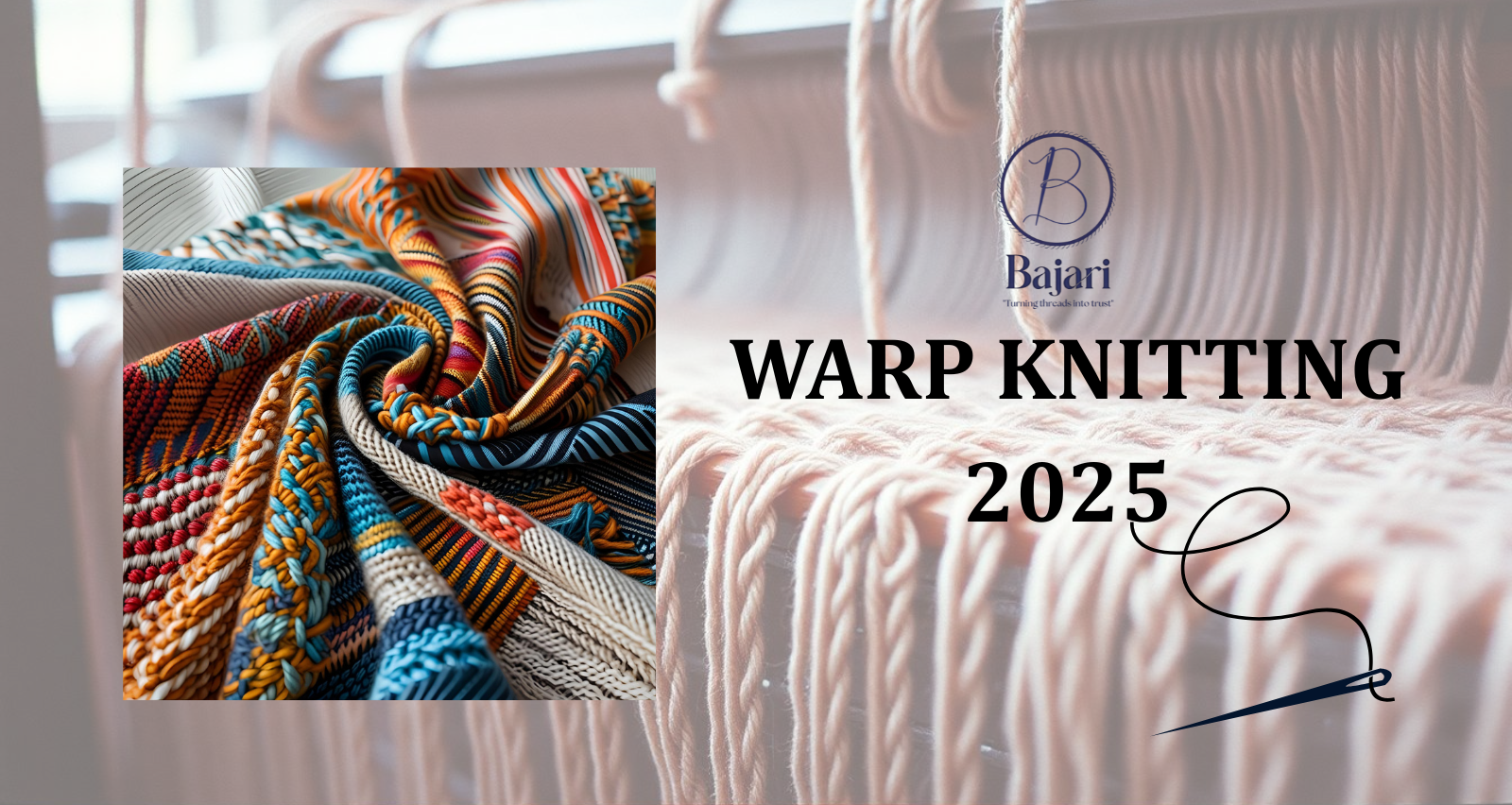Introduction
As the textile world advances in 2025, warp knitting continues to stand out as a highly efficient and versatile method for producing strong, stable, and lightweight fabrics. From high-performance sportswear to industrial and medical applications, warp knitting is evolving with automation, sustainability, and digital integration.
In this blog, we’ll explore what warp knitting is, its key applications, and the latest industry trends shaping its future.
1. What is Warp Knitting?
Warp knitting is a fabric manufacturing technique where yarns run vertically (warp-wise) through the fabric, rather than horizontally like in weft knitting. This process is typically done on high-speed knitting machines, such as Tricot and Raschel machines.
Key Features of Warp Knitting:
- High-speed production: Machines can operate at very high RPMs, making it ideal for large-scale manufacturing.
- Dimensional stability: Warp-knitted fabrics do not unravel easily and offer excellent strength.
- Low stretch (compared to weft knitting): Ideal for applications needing controlled elasticity.
- Diverse fabric types: Mesh, lace, tulle, spacer fabrics, netting, and technical textiles.
2. Applications of Warp Knitted Fabrics
Warp knitting is used across multiple industries due to its strength, stability, and ability to produce lightweight or technical fabrics.
Common Uses:
- 👕 Apparel:
- Sportswear and activewear
- Swimwear and lingerie
- Compression garments
- Lining materials
- 🏥 Medical Textiles:
- Bandages, orthotic supports, and surgical textiles
- Spacer fabrics for padding and breathability
- 🚗 Automotive & Transport:
- Seat fabrics
- Headliners and insulation panels
- Airbag linings
- 🌱 Agriculture & Industrial:
- Shade nets, tarpaulins, industrial mesh
- Geotextiles and filtration fabrics
- 🏠 Home & Technical Textiles:
- Mattress covers, mosquito nets
- Upholstery backings, curtains, and laces
3. Warp Knitting Trends in 2025
As demand increases for high-performance and sustainable fabrics, warp knitting is evolving in several ways:
A. Sustainability & Recyclability
- Increased use of recycled yarns (rPET, recycled nylon).
- Warp-knit mesh and mono-material fabrics are easier to recycle than multi-layer constructions.
- Zero-waste design practices being adopted to reduce offcuts and defects.
B. Technical Textiles Growth
- Use of warp-knitted spacer fabrics in footwear, automotive, and healthcare is increasing.
- Demand for fire-retardant, antimicrobial, and UV-resistant warp-knit fabrics is rising.
- Smart textiles with embedded sensors (for medical and defense) are entering production lines.
C. High-Speed Digitalization
- Integration of Industry 4.0 technologies:
- Real-time defect detection
- Predictive maintenance
- Production monitoring via AI and IoT
- CAD-driven warp knitting for custom lace, mesh, or patterned fabrics
D. Growing Market for Sports & Athleisure
- Warp-knit fabrics are being engineered for compression wear, ventilation zones, and lightweight layering.
- Brands are demanding more functional, durable, and breathable textiles.
Conclusion
Warp knitting remains one of the most reliable, fast, and versatile textile manufacturing techniques in 2025. Whether you’re supplying activewear brands, developing technical textiles, or expanding into industrial fabrics, warp knitting offers the durability and innovation modern markets demand.
By adopting eco-friendly materials, digital technologies, and performance-driven designs, textile manufacturers can unlock new markets and ensure long-term competitiveness.


